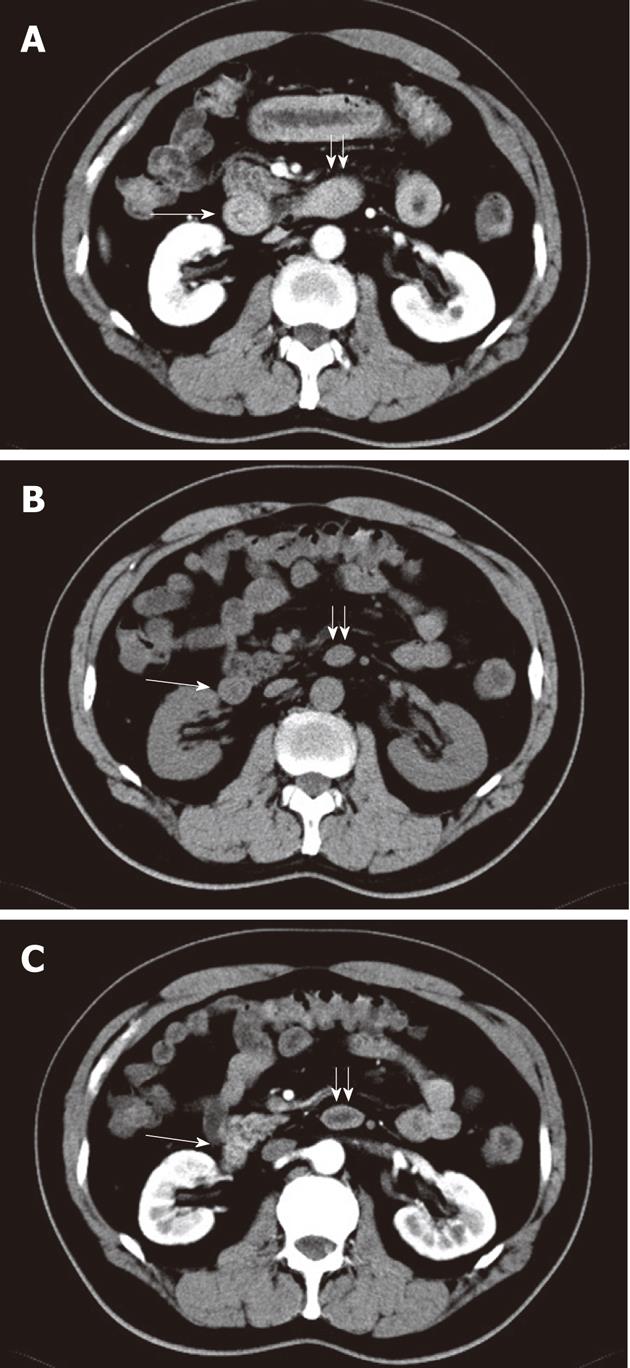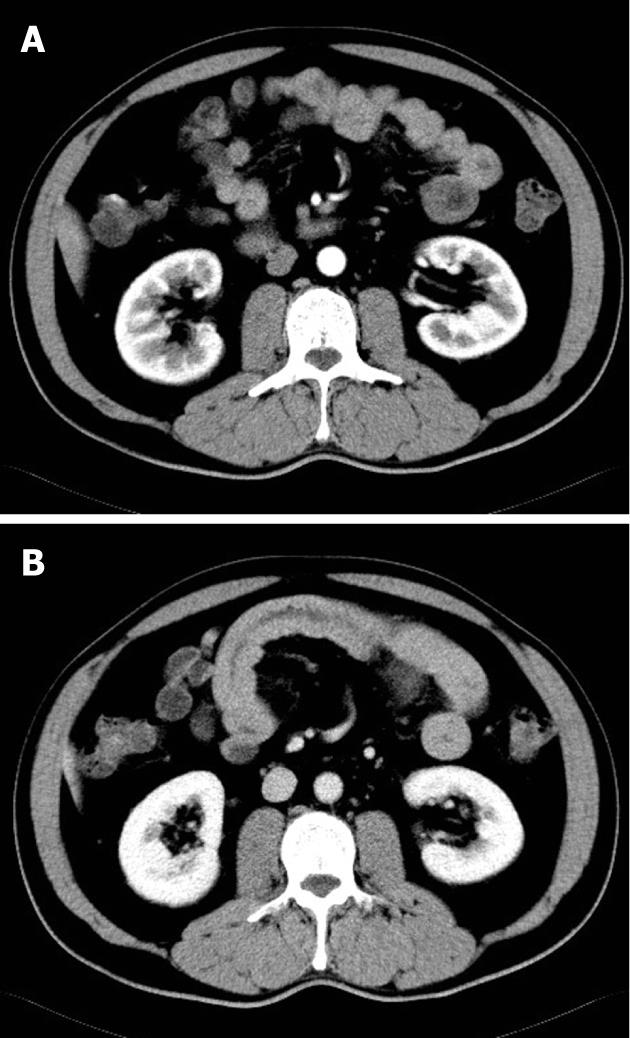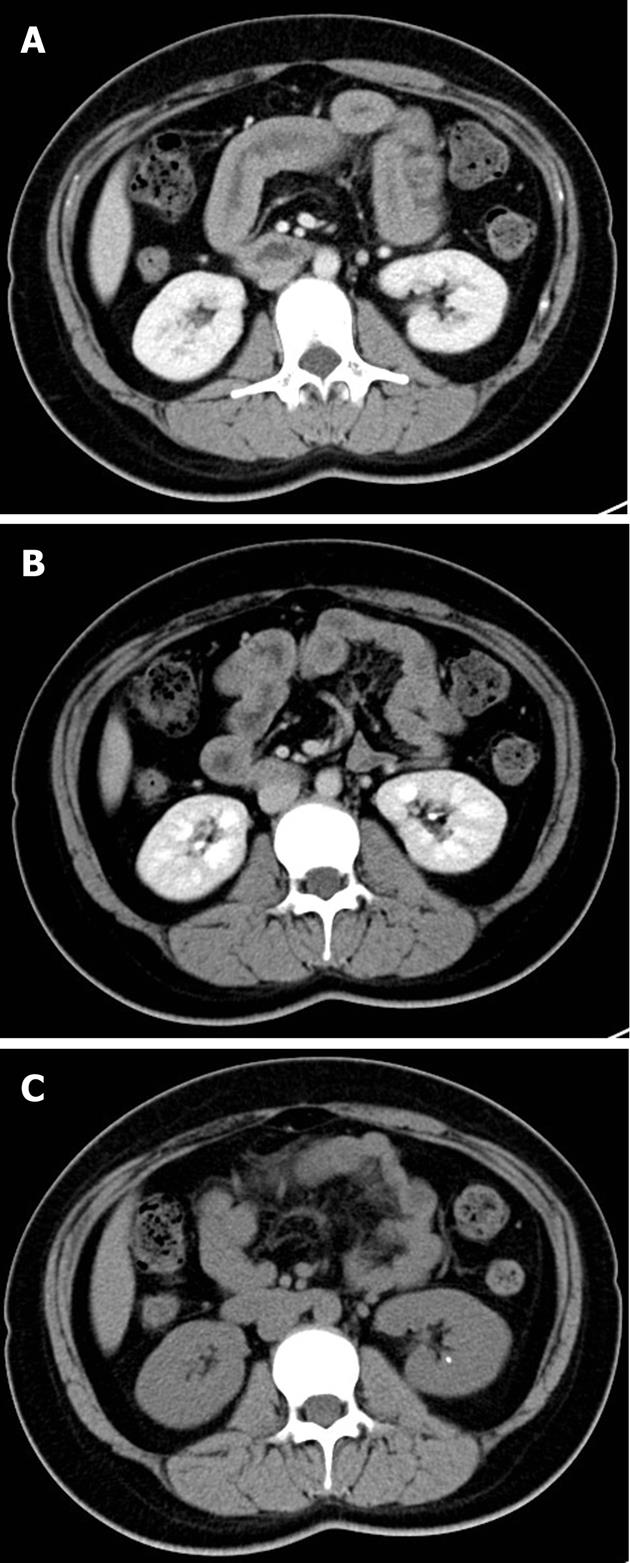Copyright
©2012 Baishideng Publishing Group Co.
World J Gastroenterol. Mar 7, 2012; 18(9): 999-1002
Published online Mar 7, 2012. doi: 10.3748/wjg.v18.i9.999
Published online Mar 7, 2012. doi: 10.3748/wjg.v18.i9.999
Figure 1 A 55-year-old man.
A: Circumferential thickening of the proximal small bowel in a long segment including the descending duodenum (long arrow) and horizontal duodenum (double short arrows) in venous phase image; B and C: This bowel segment appears normal in unenhanced image (B) and arterial phase image (C).
Figure 2 A 46-year-old man.
A: The proximal bowel segment is slightly thickened in arterial phase image; B: The proximal bowel segment shows marked circumferential thickening in venous phase.
Figure 3 A 32-year-old woman.
A: Venous phase image reveals an edematous proximal small bowel segment, including the descending and horizontal duodenum; B: The edematous wall resolved after the 40-s delayed image; C: This same bowel segment presented as normal on the unenhanced image.
- Citation: Hu XH, Gong XY, Hu P. Transient small bowel angioedema due to intravenous iodinated contrast media. World J Gastroenterol 2012; 18(9): 999-1002
- URL: https://www.wjgnet.com/1007-9327/full/v18/i9/999.htm
- DOI: https://dx.doi.org/10.3748/wjg.v18.i9.999















